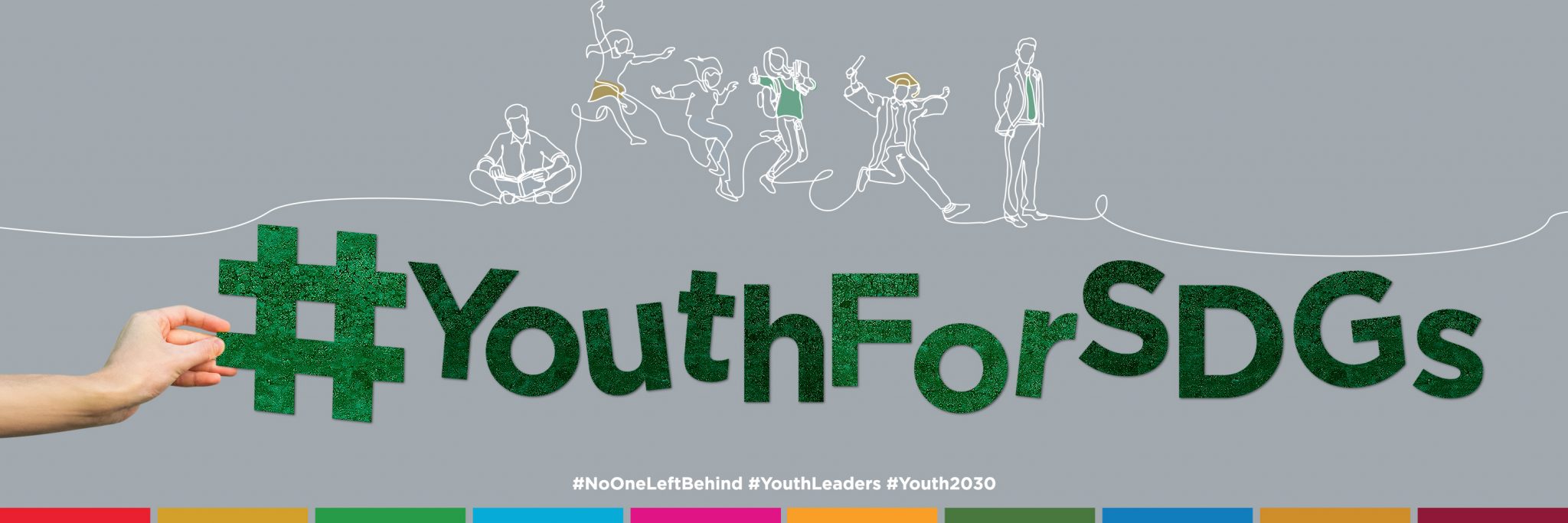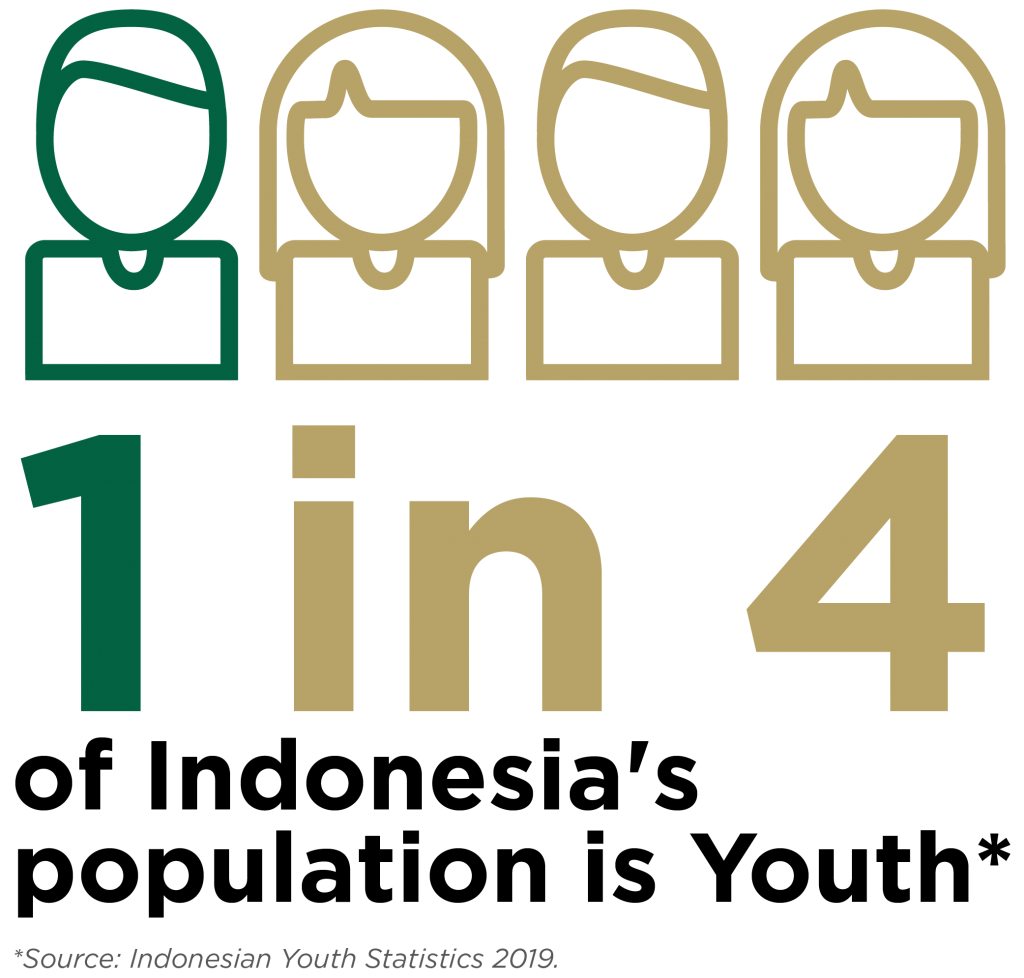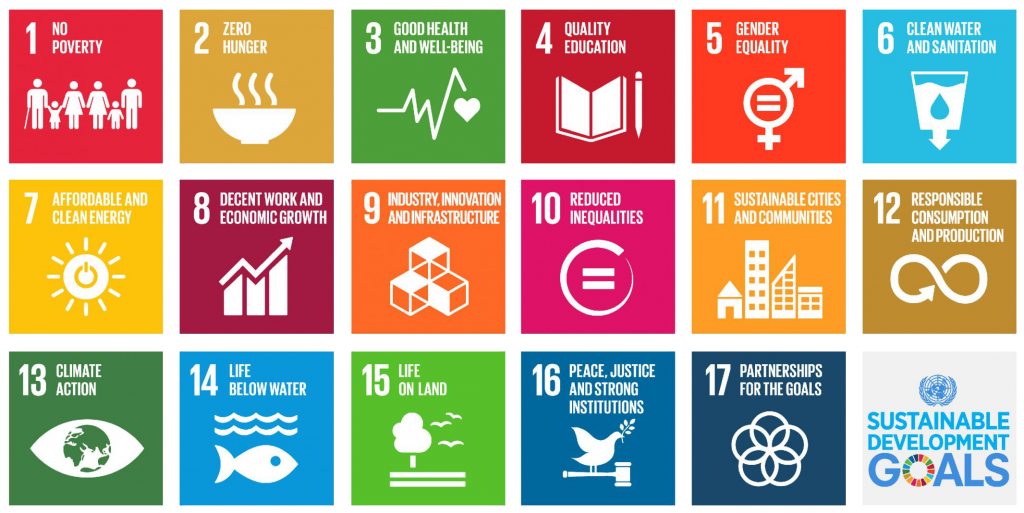How Youth Can Play a Part in Achieving the SDGs in Indonesia

Youth play a critical role in a nation’s development, as proven through history when the youth from all regions in the Indonesian archipelago were united through the declaration of the Youth Pledge in October 1928, prompting them to help fight against Dutch colonial rule and achieve Indonesian independence.
Today, the youth remain a key strength and cornerstone of Indonesia’s development. This demographic will eventually dominate the population, and is estimated to reach its peak around 2030-2040 when the number of productive nationals (ages 15 to 64) will outnumber that of the non-working population (ages below 15 and over 64). 64% out of the total projected population of 297 million by this time will be working or productive citizens.

Indonesia law defines youth as any citizen aged 16 to 30. Based on the 2019 National Socio-Economic survey, the estimated number of youth is currently 64.19 million – or a quarter of Indonesia’s total population.
Having such a large number of young citizens means huge potential for the nation’s development, particularly if all of them are equipped with various skills which can aid them in contributing significantly to the country.
Youth in Indonesia and the SDGs

Young people are undoubtedly a focus of the United Nations’ Sustainable Development Goals (SDGs) – not just as beneficiaries in the future, but as actors of development now.
In Indonesia, this is particularly relevant when it comes to certain SDGs. The SMERU Institute, in making the focus on youth as a priority, refers to at least 13 SDGs in its SDGs and Youth in Indonesia report.
These include Goal 1 of No Poverty – one in 10 adolescents in Indonesia live below the poverty line, according to 2015 data. Meanwhile, in terms of Goal 4 of Quality Education, Indonesia still ranks low at the moment when it comes to international assessments such as PISA (Program for International Student Assessment) and TIMSS (Trends in International Mathematics and Science Study).
However, the current generation has high potential to change things, and help Indonesia achieve many of the SDGs.
Today’s youth are highly curious by nature and willing to learn, which can help towards achieving Goal 4. Youth today are also optimistic about diversity – according the IDN Research Institute’s 2019 Indonesia Millennial Report, 81.5 per cent of Indonesian youth support the Unitary State of the Republic of Indonesia, while 81.4 per cent support the ‘Pancasila’ state ideology. Such mindsets are aligned with the achievement of Goal 10 of Reduced Inequalities and Goal 16 of Peace, Justice and Strong Institutions.
Indonesian youth, in line with their peers around the world, are also highly technology-savvy and supportive towards the development of tech which can positively impact on economic growth, which is in line with Goal 8 of Decent Work and Economic Growth.
If equipped with the right skills and abilities, the youth demographic can be the key to Indonesia’s success in achieving the SDGs. Access to quality education and character building to become future leaders is a form of support required by local youth.
Tanoto Foundation, an independent family philanthropy organisation founded by Sukanto Tanoto and Tinah Bingei Tanoto in 1981, offers future leadership development and scholarship programs to support young people in Indonesia and to help build a community of future leaders with leadership, policy-making and management skills who are able to eventually make positive impacts in where they live or work.
Tanoto Foundation has also collaborated with UNDP and Indonesia’s Ministry of National Development Planning (BAPPENAS) to establish SDG Academy Indonesia – the first initiative in the country which aims to raise the capabilities and capacities of young leaders and actors of development in Indonesia.

Leave a Reply